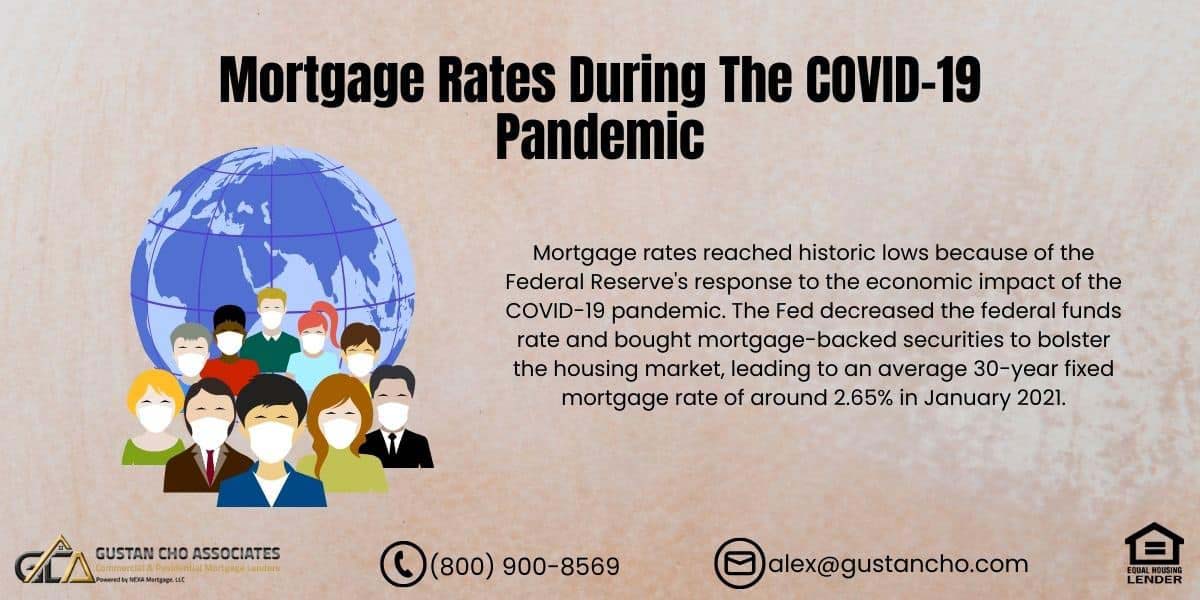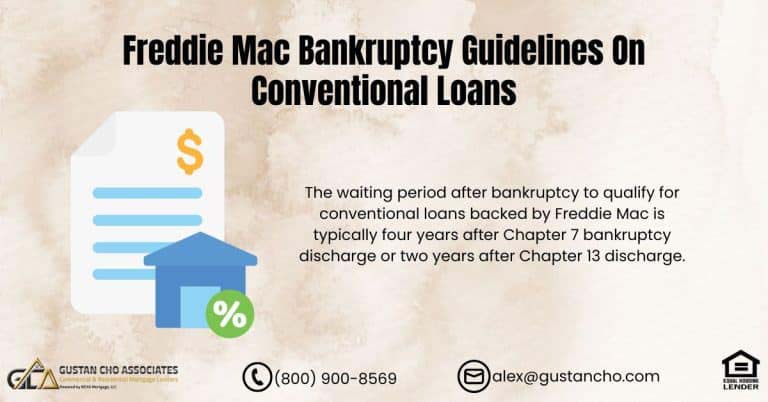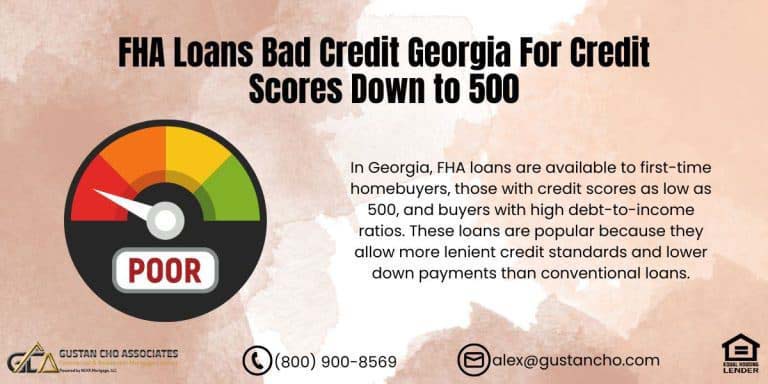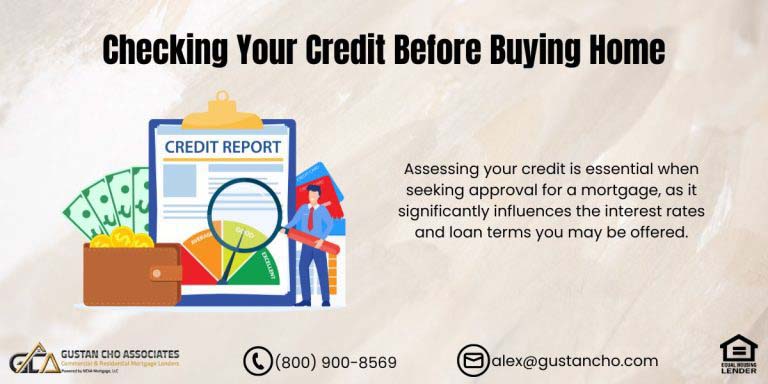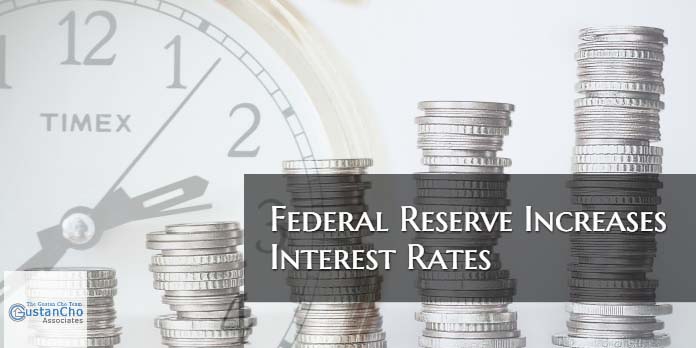This guide covers the volatility of mortgage rates during the Covid-19 pandemic. Mortgage Rates During The COVID-19 Pandemic is two-fold. Mortgage rates are at historic lows for prime borrowers. Prime borrowers are mortgage borrowers with at least 740 credit scores, low debt-to-income ratios, 25% down payment, and no loan-level pricing adjustments. However, any borrower with pricing adjustments will get penalized.
Loan Level Pricing Adjustments, or LLPA, are pricing hits lenders charged due to layered risk. The higher the risk, the higher the rate. LLPAs are common in the mortgage industry
However, due to the secondary mortgage bond market, LLPAs are out of sync during the coronavirus pandemic.. Investors do not have any appetite for buying higher-risk mortgage-backed securities (MBS). Any borrower with under 700 credit scores will take a huge pricing hit on mortgage rates. The following sections will cover the housing market volatility and mortgage rates during the Covid-19 pandemic.
Case Scenario on Mortgage Rates During The COVID-19 Pandemic
Let’s take a case scenario. A conventional loan borrower with a 740 credit score and 25% equity on a home purchase or refinance will get a 2.875% rate on a 30-year fixed-rate mortgage. For the same borrower, the rate will be 2.50% on a 15-year fixed-rate mortgage. However,
if the borrower has a credit score of 699, the rate on the 30-year fixed-rate mortgage would jump to 4.125% with a 1.0% discount point premium. This is due to little demand for non-prime borrowers. Many lenders like J.P. Mortgage Chase has set minimum credit score requirements on conventional loans at 700 FICO and require a 20% down payment.
Chase Mortgage has completely suspended originating and funding government loans until further notice. Most lenders have increased their minimum credit score requirements to 640 and higher. Borrowers with under 680 credit scores will most likely get higher mortgage rates and may need to pay discount points. There is little demand for government loans for borrowers with under 700 credit scores. This article will discuss Mortgage Rates During The COVID-19 Pandemic Economic Crisis.
Ready to Own a Home? Let’s Find the Right Mortgage Loan to Make It Happen!
Contact us today to get pre-approved and start your journey to homeownership.
When Were Mortgage Rates the Lowest?
Mortgage rates reached their lowest point in modern history in late 2020 and early 2021. Specifically, the average 30-year fixed mortgage rate dropped to approximately 2.65% in January 2021. This period of historically low rates resulted from the Federal Reserve’s response to the economic impact of the COVID-19 pandemic. This response included lowering the federal funds rate and purchasing mortgage-backed securities to support the housing market.
Mortgage Rates During The COVID-19 Pandemic Versus Lender Overlays
The U.S. economy was booming before the pandemic hit. The housing market was never as strong as it was before the pandemic. The mortgage industry was stronger than ever before the pandemic. However, the economy came to a halt once COVID-19 hit the Nation. President Trump and his administration went into damage-control mode.
President Trump instructed the Fed to lower interest rates. The Central Bank lowered interest rates to zero percent. This triggered the 10-year U.S. Treasuries yield to tank under 1.0% sending mortgage rates to an all-time low. Mortgage rates did hit a historic low. However, the mortgage industry went into chaos mode and disrupted the secondary mortgage bond markets.
Investors of MBS took a step back on risky mortgages. This created a spike in mortgage rates on mortgages with high-risk borrowers. Prime borrowers with high credit scores and strong credit profiles can get the best mortgage rates. However, borrowers with under 700 credit scores got high rates and may need to pay discount points. Many lenders have discontinued originating and funding loans for borrowers under 700 credit scores. Government loans suffered due to no appetite in the secondary market.
What is the Highest Mortgage Rate Ever?
The highest mortgage rates in the United States occurred in the early 1980s. During this period, mortgage rates soared to unprecedented levels due to high inflation and the Federal Reserve’s efforts to combat it by raising interest rates. The peak occurred in 1981 when the average 30-year fixed mortgage rate reached around 18.45%. This era was marked by economic challenges and aggressive monetary policy to curb inflation, significantly impacting borrowing costs.
How The $2.2 Trillion Coronavirus Stimulus Economic Package Hurt The Mortgage Markets
Included in the $2.2 Trillion Stimulus Coronavirus Economic Package was a law that gives homeowners hurt by the pandemic mortgage relief. Unemployed homeowners who cannot pay their mortgage payments can get a forbearance from their lenders for at least six months. If they need more than six months, the lender can extend the forbearance for up to one year.
Any mortgage lender of federally-backed mortgages needed to offer the forbearance program. The lender cannot report the missed payment to the credit bureaus. This forbearance relief program for homeowners triggered chaos on the secondary mortgage bond market.
Even though borrowers do not make monthly mortgage payments to mortgage servicers, the lender still needs to pay their investors. This can cripple the mortgage industry and undoubtedly create another worse mortgage meltdown than the 2008 financial crisis. Over 25% of homeowners are expected to use the federal forbearance mortgage program.
Want to Buy a Home? Secure the Right Mortgage Loan with Our Help!
Contact us now to discuss your options and get pre-approved for your home loan.
Refinancing Mortgage Rates During The COVID-19 Pandemic
Mortgage industry organizations such as the Mortgage Bankers Association have been lobbying about relief for lenders in Washington to no avail. This potential can bankrupt most lenders if the federal government expects lenders to absorb this. Mortgage rates were at historic lows during the pandemic. Many homeowners want to take advantage of refinancing their mortgages. However, now is not the right time to refinance unless you are a prime borrower with 25% equity. Dale Elenteny, a senior loan advisor at Gustan Cho Associates, says the flowing about mortgage rates during the Covid-19 pandemic:
FHA and VA Streamline Refinances cannot be done in most cases due to extremely high rates due to the illiquid secondary mortgage bond markets. Only borrowers with 740 credit scores and 25% equity with no pricing adjustments can benefit from refinancing during the coronavirus pandemic.
Mortgage rates during the Covid-19 pandemic will stabilize as time passes. Once the U.S. economy reopens, things will get back to normal. The key question is not if the economy will recover but when. Mortgage rates are expected to remain low for weeks and months to come. FHA Streamline Refinancing and VA streamline refinancing are expected to be more popular than ever in the coming weeks and months. Stay tuned for more updates on Gustan Cho Associates in the coming days, weeks, and months. STAY TUNED!!!
When Did Interest Rates Go Up?
Interest rates in the United States have fluctuated over time, often in response to economic conditions and monetary policy decisions by the Federal Reserve. Notable periods when interest rates increased include:
- Late 1970s to Early 1980s: The Federal Reserve, under Chairman Paul Volcker, raised interest rates significantly to combat high inflation. This period saw some of the highest interest rates in history, peaking in 1981.
- Mid-2000s: In response to the booming housing market and concerns about inflation, the Federal Reserve raised the federal funds rate from 1% in 2004 to 5.25% by 2006.
- Post-2015: After keeping rates near zero following the 2008 financial crisis, the Federal Reserve began gradually increasing the federal funds rate starting in December 2015. This tightening cycle continued until 2018, with the rate reaching 2.25%-2.50% by the end of that year.
- 2022-2023: In response to rising inflation, the Federal Reserve initiated a series of rate hikes starting in March 2022. The federal funds rate was increased several times, reaching around 4.5%-4.75% by early 2023.
These periods reflect the Federal Reserve’s efforts to manage inflation and economic growth through monetary policy adjustments.
FAQs: Mortgage Rates During The COVID-19 Pandemic
- 1. What caused mortgage rates to reach historic lows during the COVID-19 pandemic? Mortgage rates reached historic lows because of the Federal Reserve’s response to the economic impact of the COVID-19 pandemic. The Fed decreased the federal funds rate and bought mortgage-backed securities to bolster the housing market, leading to an average 30-year fixed mortgage rate of around 2.65% in January 2021.
- 2. Who benefited the most from the low mortgage rates during the pandemic? Prime borrowers, defined as those with at least a 740 credit score, low debt-to-income ratios, 25% down payment, and no loan-level pricing adjustments (LLPA), benefited the most from the low mortgage rates. These borrowers were able to secure the best rates due to their strong credit profiles.
- 3. What are Loan Level Pricing Adjustments (LLPA)? LLPAs are pricing adjustments that lenders apply because of multiple layers of risk. The rate increases as the level of risk increases. LLPAs became more noticeable during the pandemic as investors displayed limited interest in mortgage-backed securities with high levels of risk.
- 4. How did mortgage rates differ for non-prime borrowers during the pandemic? Due to increased risk, non-prime borrowers faced significantly higher mortgage rates, particularly those with credit scores under 700. For instance, a borrower with a 699 credit score could see their 30-year fixed mortgage rate jump to 4.125% and a 1.0% discount point premium.
- 5. How did the $2.2 trillion Coronavirus Stimulus Economic Package affect the mortgage market? The stimulus package included a mortgage relief law that allowed homeowners affected by the pandemic to receive forbearance from their lenders for at least six months, potentially extendable to one year. This caused chaos in the secondary mortgage bond market, as lenders still had to pay their investors even when borrowers missed payments.
- 6. How did the mortgage industry react to the pandemic? Many lenders, such as Chase Mortgage, suspended originating and funding government loans and increased their minimum credit score requirements. Borrowers with credit scores under 700 found it particularly challenging to secure loans or had to pay higher rates and discount points.
- 7. When were mortgage rates the highest in U.S. history? The highest mortgage rates occurred in the early 1980s, peaking in 1981 when the average 30-year fixed mortgage rate reached around 18.45%. This was due to the Federal Reserve’s aggressive monetary policy to combat high inflation.
- 8. How did the COVID-19 pandemic affect refinancing options? Refinancing options, such as FHA and VA Streamline Refinances, were limited during the pandemic due to high rates in the illiquid secondary mortgage bond markets. Only prime borrowers with strong credit profiles and significant equity could benefit from refinancing during this period.
- 9. What is expected for mortgage rates in the future? Mortgage rates are anticipated to stay at low levels shortly. The rates will likely return to normal once the U.S. economy reopens and becomes stable. However, borrowers with excellent credit will still have the most advantage in terms of favorable refinancing opportunities.
- 10. When have interest rates historically gone up? Interest rates have risen during several key periods. These include the late 1970s to early 1980s under Chairman Paul Volcker to combat high inflation, the mid-2000s in response to a booming housing market and inflation concerns, post-2015 following the 2008 financial crisis to gradually tighten monetary policy, and 2022-2023 in response to rising inflation, with several rate hikes starting in March 2022.
If you have any questions about interest rates or you to qualify for loans with a lender with no overlays, please contact us at 800-900-8569. Text us for a faster response. Or email us at alex@gustancho.com. The team at Gustan Cho Associates is available 7 days a week, on evenings, weekends, and holidays.
This blog about the Mortgage Rates During The COVID-19 Pandemic was updated on May 31st, 2024.
Buying a House? We Can Help You Find the Best Mortgage Loan for Your Needs!
Let us guide you through the mortgage process to make your home buying experience smooth and easy. Reach out today to get started.


